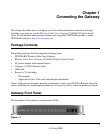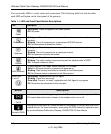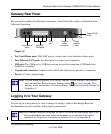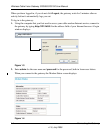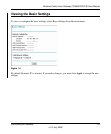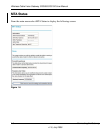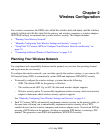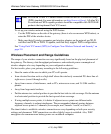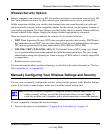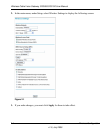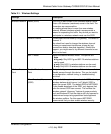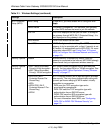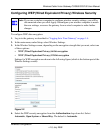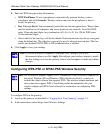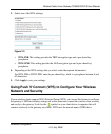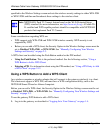
Wireless Cable Voice Gateway CG3000/CG3100 User Manual
Wireless Configuration 2-3
v1.0, July 2009
Wireless Security Options
Indoors, computers can connect over 802.11n wireless networks at a maximum range of up to 300
feet. Such distances can allow for others outside your immediate area to access your network.
Unlike wired network data, your wireless data transmissions ca
n extend beyond your walls and
can be received by anyone with a compatible adapter. For this reason, use the security features of
your wireless equipment. The Voice Gateway provides highly effective security features which are
covered in detail in this chapter. Deploy the security features appropriate to your needs.
There are several ways you can enhance the sec
urity of your wireless network:
• WEP
. Wired Equivalent Privacy (WEP) data encryption provides data security. WEP Shared
Key authentication and WEP data encryption block all but the most determined eavesdropper.
This data encryption mode has been superseded by WPA-PSK and WPA2-PSK.
• WP
A-PSK (TKIP), WPA2-PSK (AES). Wi-Fi Protected Access (WPA) using a pre-shared
key to perform authentication and generate the initial data encryption keys. The very strong
authentication along with dynamic per frame re-keying of WPA makes it virtually impossible
to compromise.
• Restrict access to your router.
For more information about wireless technology
, see the link to the online document in “Wireless
Networking Basics” in Appendix B.
Manually Configuring Your Wireless Settings and Security
You can view or manually configure the wireless settings for the gateway in the Wireless Settings
screen. If you want to make changes, make sure to note the current settings first.
Note: If you use a wireless computer to change the wireless network name (SSID) or
wireless security settings, you will be disconnected when you click Apply. To
avoid this problem, use a computer with a wired connection to access the gateway.
To view or manually configure the wireless
settings:
1. Log in to the gate
way as described in “Logging In to Your Gateway” on page 1-4.



